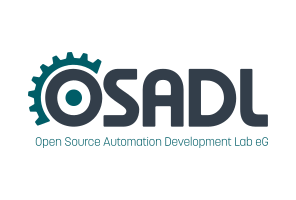Dates and Events:
|
OSADL Articles:
2023-11-12 12:00
Open Source License Obligations Checklists even better nowImport the checklists to other tools, create context diffs and merged lists
2022-07-11 12:00
Call for participation in phase #4 of Open Source OPC UA open62541 support projectLetter of Intent fulfills wish list from recent survey
2022-01-13 12:00
Phase #3 of OSADL project on OPC UA PubSub over TSN successfully completedAnother important milestone on the way to interoperable Open Source real-time Ethernet has been reached
2021-02-09 12:00
Open Source OPC UA PubSub over TSN project phase #3 launchedLetter of Intent with call for participation is now available |
Is it possible to run a Kernel-based Virtual Machine (kvm) without affecting the real-time capabilities of the host system?
Title
Is it possible to run a Kernel-based Virtual Machine (kvm) without affecting the real-time capabilities of the host system?
Authors
Carsten Emde, Michael Kremer, Jörg Müller
Author Information
Open Source Automation Development Lab (OSADL), Homag, Germany
Abstract
Virtualization has, among others, the potential to increase the longevity of a system design, to reduce the number of separate hardware devices, to increase the mean-time between failures, and to facilitate testing and debugging; thus, it is also of special interest for embedded real-time systems. The virtual machine, however, closely interacts with the operating system and, in the case of hardware-supported virtualization such as Intel's vmx or AMD's svm, also with internal execution paths of the processor. The question, therefore, arises, to what extent virtualization may have an impact on the real-time capabilities of the host system.
The measurements were made on standard Intel motherboards (Core 2 Duo/Quad, 2.0 to 2.4 GHz) running Linux 2.6.21 and above equipped with the Realtime-Preempt patches. Virtualization was obtained using the Kernel-based virtual machine (kvm) running unpatched Fedora 7 and Windows XP as guest systems. The scheduling latency was determined using consecutively triggered runs of timed threads using Thomas Gleixner's cyclictest application.
Condition | Scheduling latency (us) |
No kvm, no X11 | 25 to 35 |
No kvm, with X11 | 110 to 300 |
kvm, no X11 | 25 to 35 |
kvm, with X11 | 110 to 300 |
The results show that kvm can be used without major impact on the real-time capabilities of the host system. The primary cause of delayed latency appears to be the X Window System. Additional work is needed to locate the latency sources in the X Window System (server, graphics driver) and to investigate possible strategies of removal.
Keywords
Realtime-Preempt Patches, Kernel-based Virtual Machine, X11




